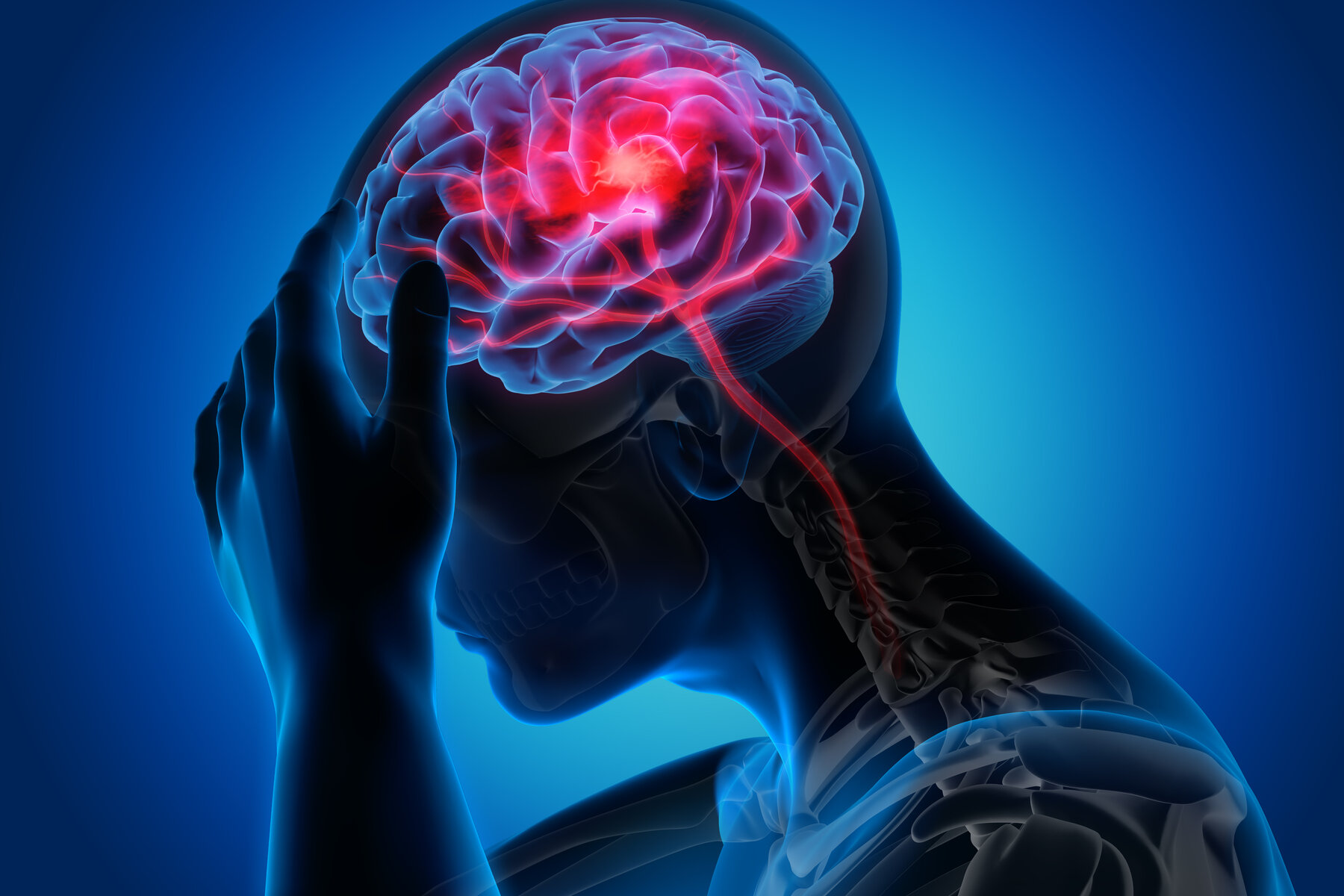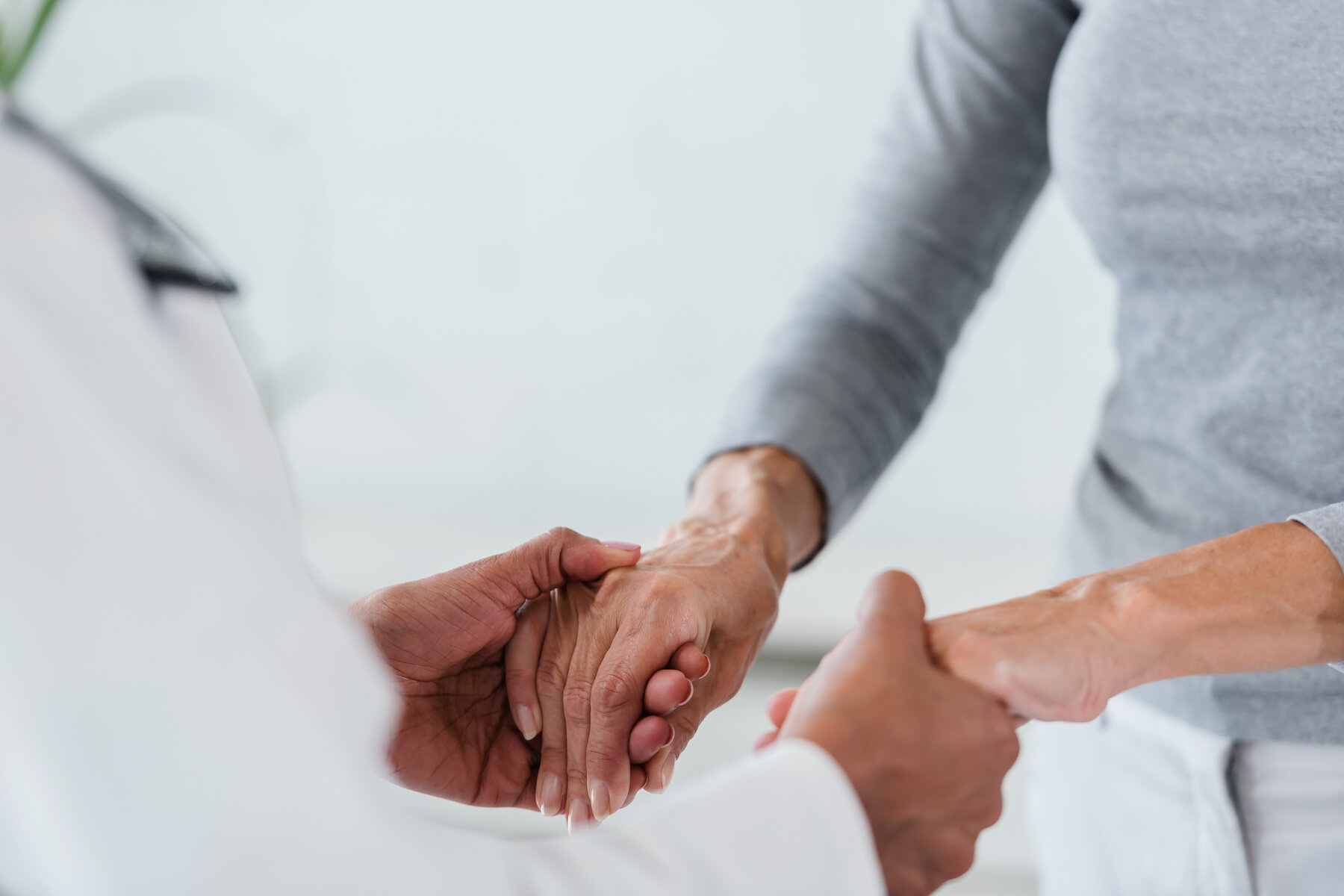Stroke treatment of ischemic cerebral infarction
In ischemic stroke treatment, the aim is to restore blood flow to the affected area of the brain as quickly as possible. If possible, the treatment of choice is systemic lysis therapy. This involves administering a blood clot-dissolving drug via the vein. The time window for this is small and is about 4-6 hours after the onset of the first stroke symptoms. After a longer period of time, brain cells perish and the damage is often irreparable. Disability and death can be reduced by reopening the vessel as quickly as possible. However, there is a risk of brain hemorrhage with lysis therapy, so it is not always suitable for patients with certain pre-existing conditions or who are taking blood-thinning medications.
If a very large cerebral vessel is blocked, mechanical thrombectomy is also an option. In this procedure, a very thin catheter is inserted at the site of the vessel occlusion, and the catheter is used to mechanically remove and aspirate the blood clot. Usually, local lysis therapy is also administered via the catheter. This form of stroke treatment should also be performed within the first six hours. Thrombectomy is a complicated and complex method that is only offered by experienced specialists in larger centers. Patients eligible for this procedure may be transferred to an appropriate center, possibly after prior initiation of lysis therapy. Thrombectomy is considered in about 10% of stroke patients.
Stroke treatment of cerebral hemorrhage
In the case of a brain hemorrhage, the continuing bleeding must be stopped and negative effects of the bleeding on the brain tissue must be avoided. The escaping blood displaces surrounding brain tissue and the increased pressure can damage parts of the brain that are still healthy. To reduce the pressure, it may be necessary to remove the blood by open surgery in cases of major hemorrhage. If necessary, a thin tube (drainage) must be placed in the brain ventricle system to drain the blood and reduce the pressure on the brain.
In the event of bleeding from a ruptured vessel bulge (aneurysm), the aneurysm must be resealed. This can be done either by attaching a clip or inserting platinum coils via a catheter. If bleeding is due to high blood pressure, this must be lowered with medication.
What is meant by a stroke unit?
Acute stroke treatment should ideally take place in a stroke unit. This is a department that specializes in the treatment and care of acute strokes. The team there consists of specially trained physicians, nursing staff as well as physiotherapists, occupational therapists, speech therapists and social workers. In the stroke unit, rapid diagnostics are initiated as a prerequisite for targeted therapy (e.g., thrombolysis, thrombectomy). The body functions, such as blood pressure, pulse and respiration, are continuously monitored as in an intensive care unit. Any side effects of drug therapy can be detected and treated with a quick response. Especially important is the good cooperation with other departments, e.g. a neuro center, where special neurosurgical or neuroradiological interventions can be performed on an emergency basis. In addition, early rehabilitation, e.g. physiotherapy and speech therapy, can already be initiated.
What happens during rehabilitation?
Acute stroke treatment in the stroke unit is usually followed by rehabilitation. The aim is to get the patient fit for everyday life again. The early start of appropriate measures in the stroke unit is crucial for success.
The program during rehabilitation consists of a combination of different procedures. The side affected by the stroke should be exercised as much as possible to prevent remaining functions there from atrophying. Muscles and joints need exercise to stay in shape. Healthy parts of the brain can take over the function of the diseased areas. Physiotherapy is responsible for the musculoskeletal system. Muscle development, posture, movement patterns, sense of balance, and coordination can be trained through many exercises. This can improve or eliminate paralysis and malpositions. Patients become more mobile and independent through successful stroke treatment.
Speech therapy is necessary in order to gain speech function. Initial speech exercises take place as soon as the patient is responsive. Swallowing disorders must be recognized and treated at an early stage. Occupational therapy supports the patient in mastering everyday life again as independently as possible. The handling of certain aids can be trained. Social services help with planning and organizing the return to home.
What are risk factors for stroke and how can you prevent a stroke?
We cannot influence age and genetic factors. But many other factors also promote the development of a stroke. Here, one can actively counteract by treating risk factors and adopting a healthy lifestyle. Those who have several risk factors are particularly at risk for stroke. Here are some risk factors that promote arteriosclerosis and thus circulatory disorders:
- Diabetes mellitus
- Hypertension
- High cholesterol
- Smoking
- Overweight
With these risk factors, there is also a frequent occurrence of other circulatory disorders, e.g. a circulatory disorder of the leg arteries, i.e. peripheral arterial diesease (PAOD) or a circulatory disorder in the area of the coronary vessels, i.e. coronary artery diesease (CAD). The therapy of PAOD or CAD also consists of treating the risk factors and can thus also prevent a stroke.
To prevent arteriosclerosis and its secondary diseases, it is important to consistently treat elevated blood pressure, blood sugar and lipid levels with medication. In addition, a change in diet with weight loss is usually necessary. Regular exercise and sporting activities are also necessary. Smoking must be given up in any case. Regular control and monitoring of these risk factors by the physician are necessary.
Heart disease, especially atrial fibrillation and valvular heart disease, can cause blood clots to form in the heart. These can enter the brain vessels via the bloodstream and lead to blockage of a brain vessel (embolism) and thus to a stroke. In the case of these heart conditions, blood-thinning medications are prescribed as a preventive measure to prevent this clot formation. These must be taken consistently and regularly.
With optimal adjustment of all risk factors, a healthy lifestyle without nicotine, with regular physical activity, and with consistent treatment of any heart disease and arrhythmia, the risk of stroke can be significantly reduced.


